
Watch the sighting here:
Marc Cronje sent this video of the traffic cop-in-training to Latest Sightings. He filmed it while visiting the Kruger National Park in northeast South Africa.
Relatable
One of the joys of watching elephants in the wild is that there is always something going on. Much of their behaviour is highly relatable to humans, especially that of the young.
In Marc’s video, we see a young elephant bull standing in the middle of the road.
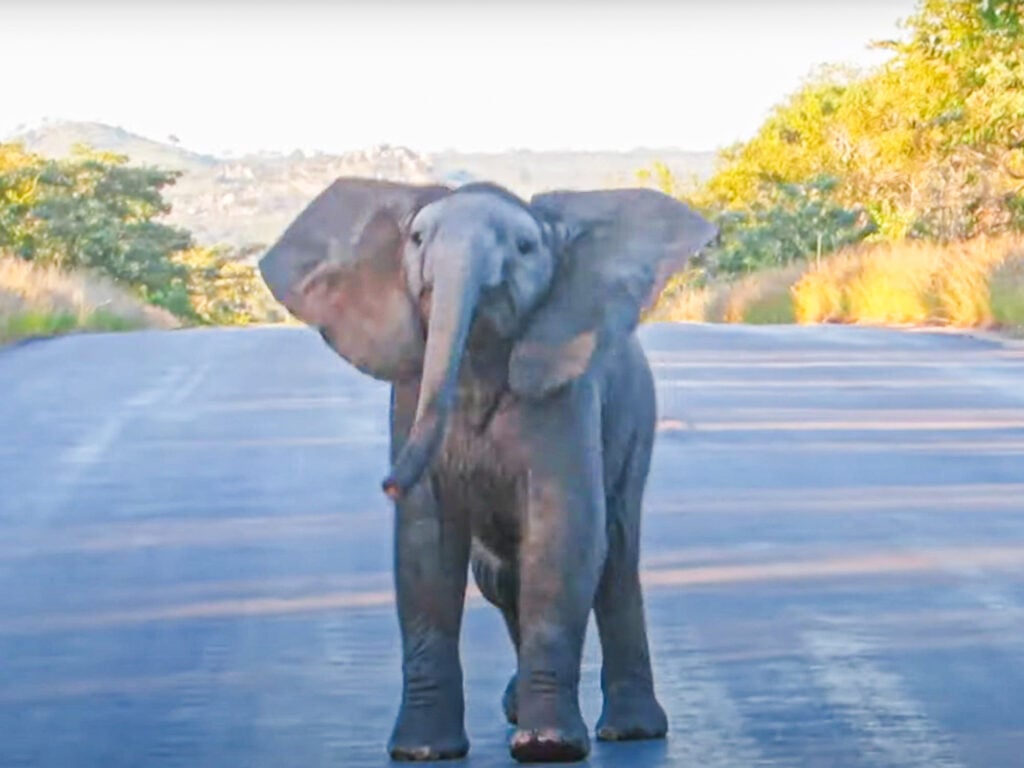
With his head raised high and ears flared, the young bull is trying to look as intimidating as possible. We can assume the object of his attention is Marc’s vehicle.
One could even say that he is playing at being a crossing guard.
All the moves
Dancing back and forth, he uses his full array of intimidation tactics. Although he hasn’t yet mastered control of his trunk, he waves it about while trumpeting in warning.
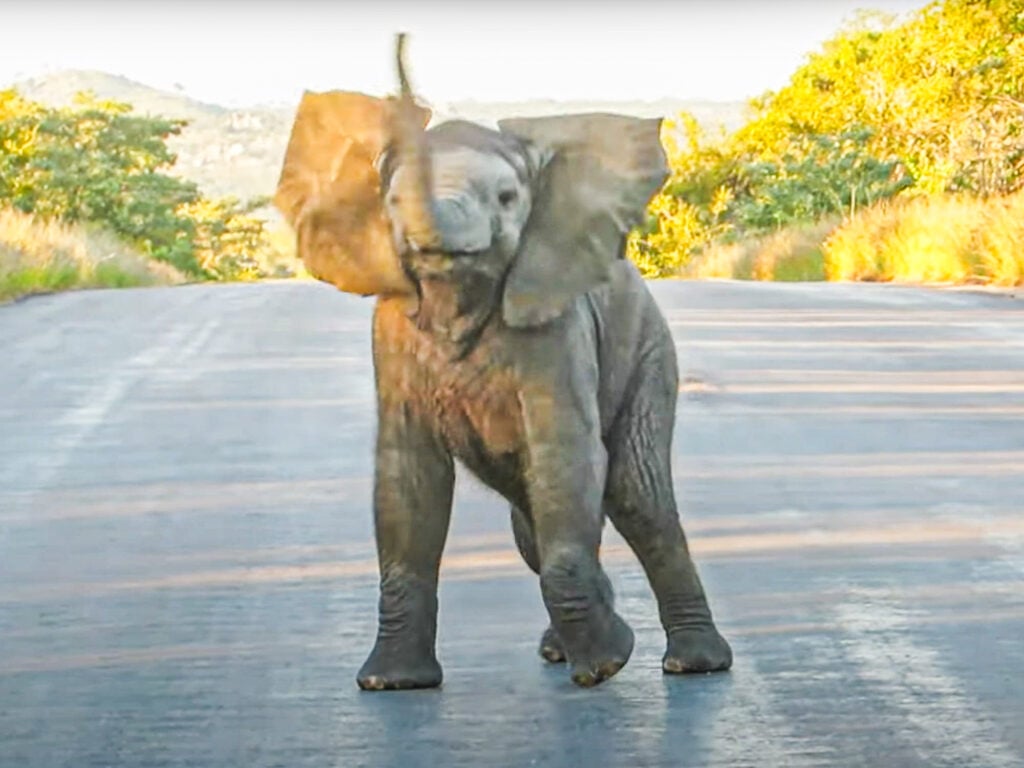
Next, he poses boldly, raising his head, flaring his ears and holding his tail in a horizontal position. All of these are displays that an adult will use to project strength while avoiding physical conflict.
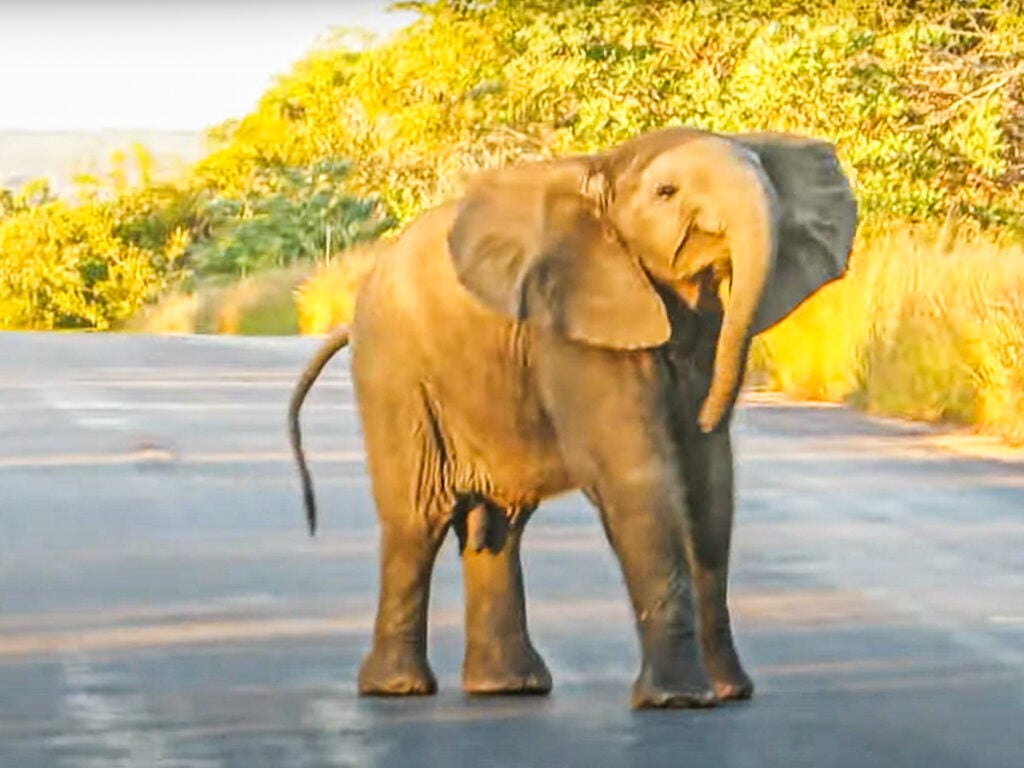
He would probably be mortified to learn that the only reaction his antics elicit is giggling from Marc and his companions in their vehicle.
Big cousin arrives
After “securing the scene”, the little one goes across to greet one of his older herdmates. The approaching bull is also a young male, and, judging by his emerging tusks, is 2-3 years of age.
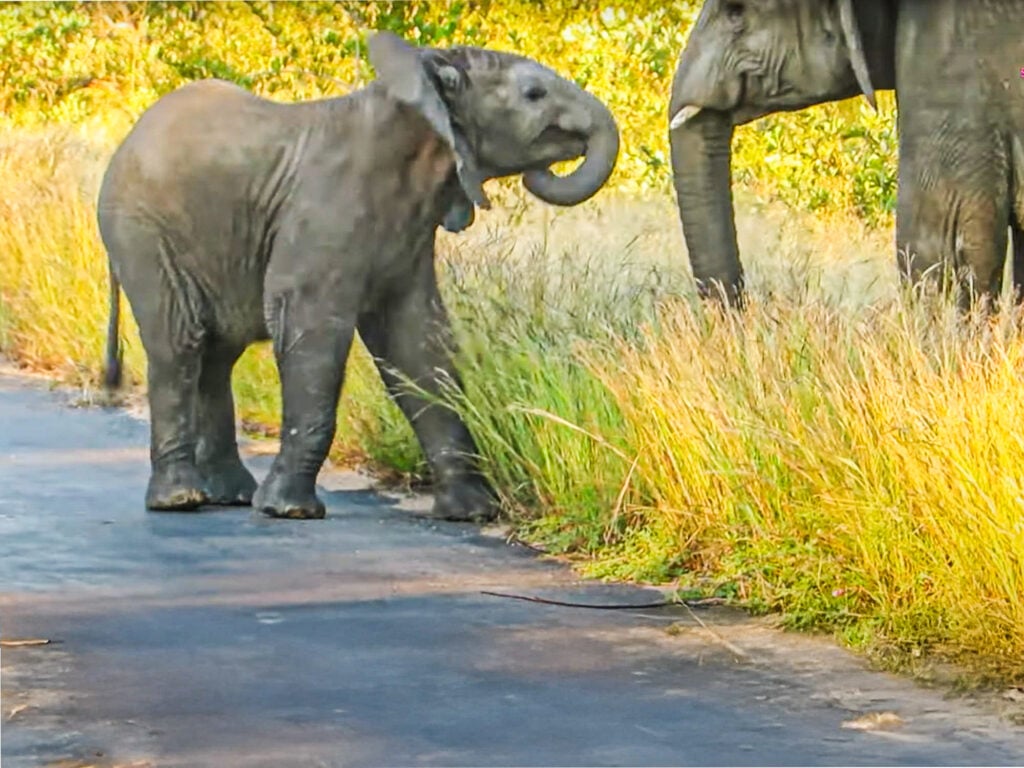
The pair greet each other briefly, before the new arrival turns his attention towards Marc’s vehicle.
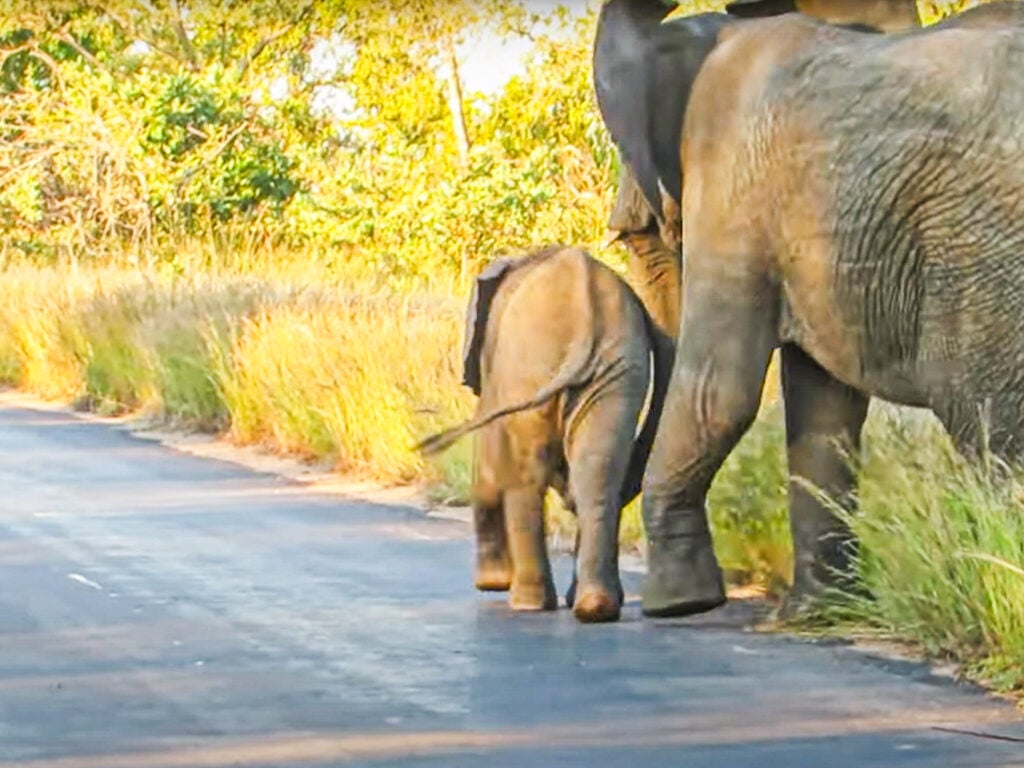
This is how you do it
It would seem that the older elephant had been watching his younger cousins’ display. As, a short while later, he too puts on a display for Marc.
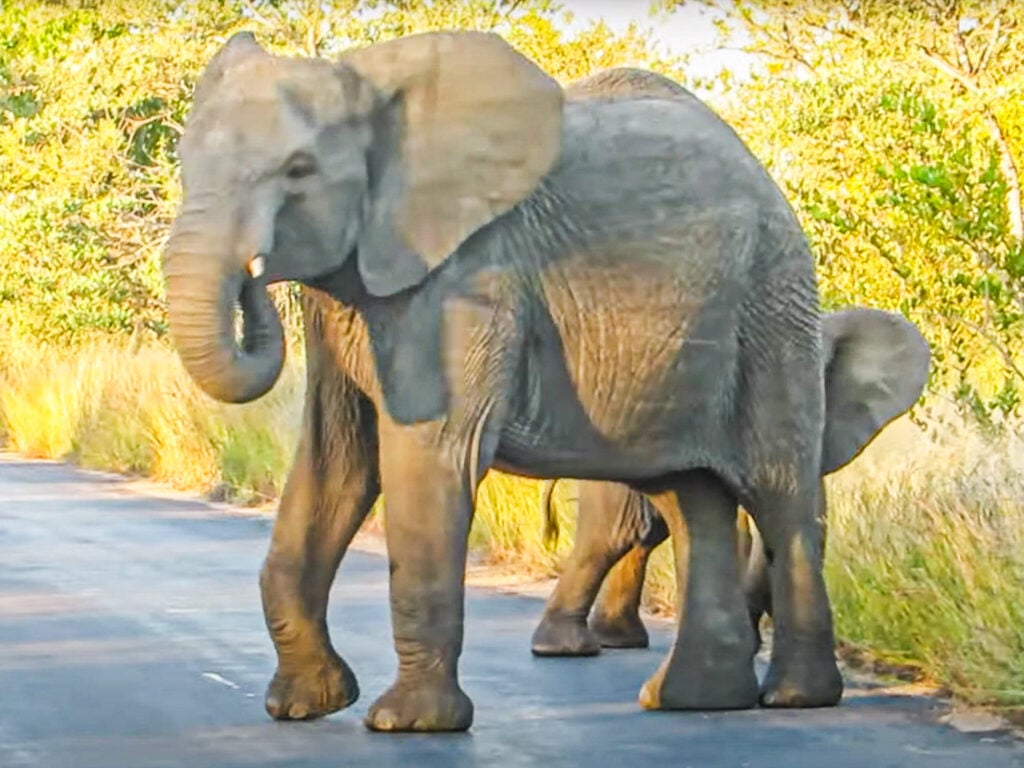
He starts his display with a side-on pose to show his size. Subsequently, he too goes through a range of gestures designed to visually warn perceived threats to keep their distance.
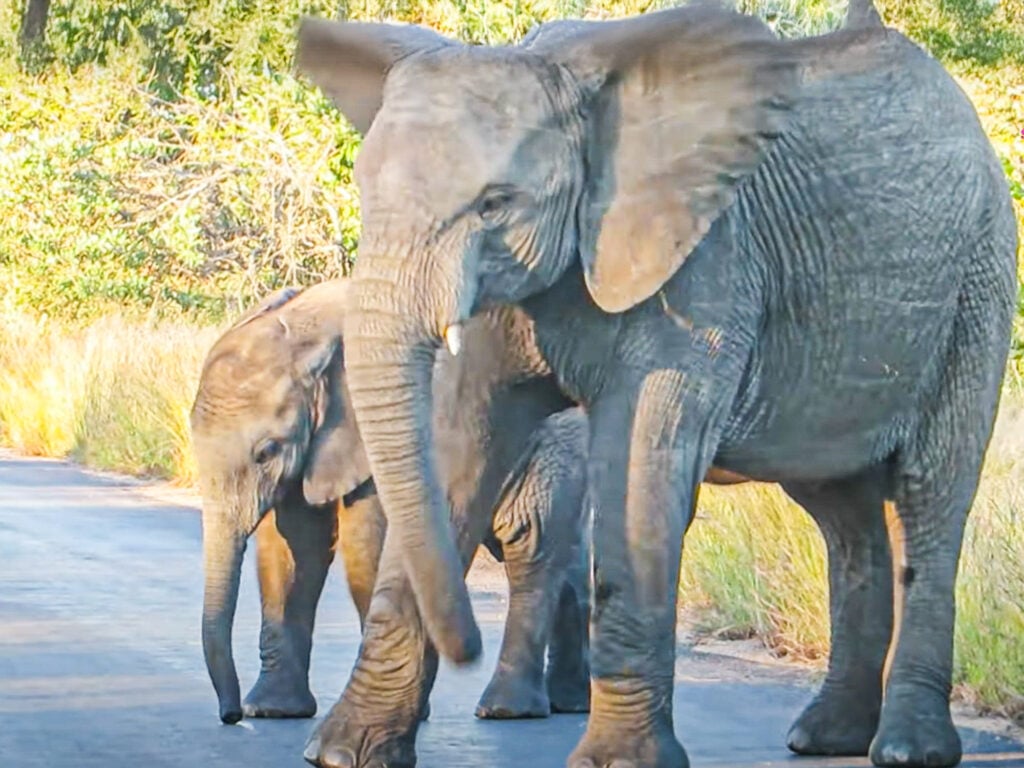
Meanwhile, one can’t help but think that, as he stands in the background, the calf is having a bit of a sulk. It’s never fun to be shown up by an older family member.
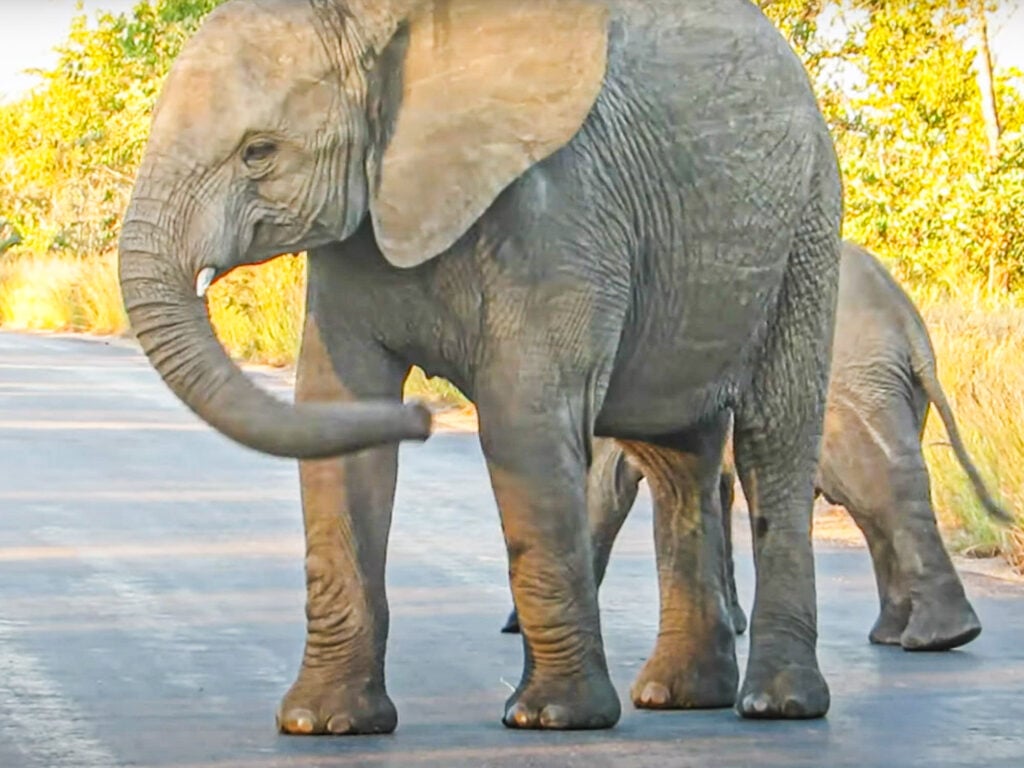
As the video ends, both young elephants continue to show off to the bemusement of Marc, and probably anyone who watches this video.
Get our Best Sightings as they Come in
Elephant body language
As cute as it is to watch, the elephant calf’s display is an important part of its learning how to be an elephant.
Like most creatures, elephants use body language to communicate information, both to other elephants and other species. This information gives clues as to their mood, social status and intentions.
Their trunks are used to signal a threat, as well as to reassure one another.
Ears spread wide are a threat display designed to make them appear larger and more intimidating.
Even their tails can signal their mood. Side-to-side swishing suggests calm, while a tail held up to the side reflects anxiety, and a motionless hanging tail signals alertness.
Lastly, if an elephant’s eyes are wide open, it generally suggests either fear or excitement.
When assessing these displays, it is important to interpret them within the context of what the elephant is doing. It is well worth taking the time to recognise these behaviours to fully appreciate the remarkable intelligence of these gentle, yet powerful creatures.
